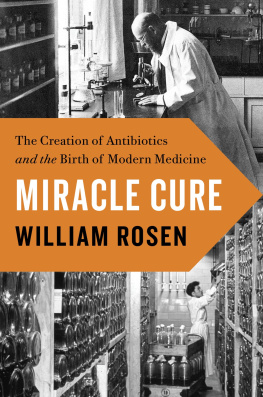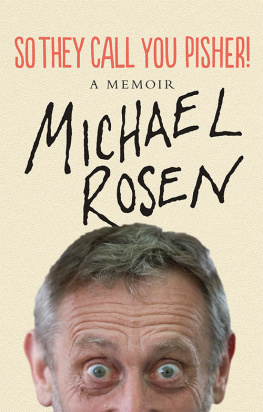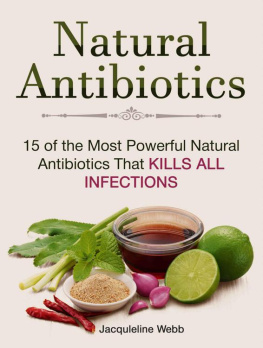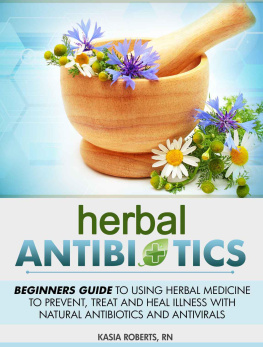Penguin supports copyright. Copyright fuels creativity, encourages diverse voices, promotes free speech, and creates a vibrant culture. Thank you for buying an authorized edition of this book and for complying with copyright laws by not reproducing, scanning, or distributing any part of it in any form without permission. You are supporting writers and allowing Penguin to continue to publish books for every reader.
Names: Rosen, William, 1955 author.
medicine / William Rosen.
references and index.
While the author has made every effort to provide accurate telephone numbers, Internet addresses, and other contact information at the time of publication, neither the publisher nor the author assumes any responsibility for errors or for changes that occur after publication. Further, the publisher does not have any control over and does not assume any responsibility for author or third-party Web sites or their content.
PROLOGUE
Five and a Half Grams
T he Smithsonian Institutions National Museum of American History is home to more than ten million items, from Julia Childs saut pan to a twenty-foot-wide concrete chunk of the original Route 66. Less of a draw for crowds, but far more historically significant, is a thirty-page-long documenta hospital chartcovering a month in the life of a single patient: Anne Miller, whose fourth pregnancy ended in a miscarriage on Valentines Day, 1942. The written record of her hospital stay begins almost immediately thereafter, when, after experiencing severe chills and temperatures spiking to more than 106, she was transferred from the maternity wing of New Haven Hospital to the intensive care unit. She had contracted hemolytic streptococcal septicemia; informally, blood poisoning.
Her condition, already poor, deteriorated. Each day, a box on Mrs. Millers chart recorded the number of bacterial colonies found in her blood. The one for March 1 contains the symbol : infinity. She was given blood transfusions, rattlesnake serum, and even the new sulfa drugs. Nothing worked.
On March 11, her doctor, John Bumstead, approached another of his patients, John Fulton, a neurophysiologist from Yale University, who had been hospitalized for on a survey of California laboratories. Dr. Bumstead knew that Fulton was a close friend of Howard Florey, an Australian pathologist working in London; so close, in fact, that Fulton had agreed to care for the Florey children for the duration of the war. Bumstead also knew that Dr. Florey was the worlds leading authority on, and advocate for, the therapeutic potential of a compound first discovered fourteen years before: penicillin.
Fulton agreed to call Floreys colleague, Norman Heatley, who worked at the Merck & Co. pharmaceutical plant in Rahway, New Jersey. Heatley, in turn, importuned Randolph Major, head of Mercks research labs, to secure a quantity of penicillin, then one of the rarest substances in the world, and one with such a high priority for the war effort that its release required approval from the National Research Council in Washington, DC. One of the NRCs senior members was Majors boss, George W. Merck.
The calls worked. Early on the morning of Saturday, March 14, a glass vial containing five and a half grams of brown powderhalf the amount of penicillin then available in the entire countryleft Rahway. By noon, it was delivered to Dr. Bumstead, who, with no way of knowing the size of a recommended dosage, invented one on the spot. He dissolved a portion of the powder in saline solution and gave Mrs. Miller a test dose intravenously at 3:30 P.M . Once she seemed to tolerate it, he gave her another dose every four hours through the night.
By Sunday, Mrs. Millers temperature had dropped to 99. The fifth person in the world to receive a treatment of penicillin, and the first whose life was saved by it, was sitting up and eating. She would continue doing so for the next fifty-seven years. The eons-long war between humanity and infectious disease had a new order of battle, one that organized research hospitals, university laboratories, pharmaceutical corporations, and national governments into an army. The antibiotic age had arrived.
Some revolutions are only visible from a comfortable distance in time. Not so antibiotics. Through the first four decades of the twentieth century, and well into the fifth, the second leading cause of death in the United States was pneumonia, overwhelmingly caused by Streptococcus pneumoniae, a first cousin to the bacterium that nearly took Anne Millers life. The sixth deadliest killer, nearly every year, was Mycobacterium tuberculosis. By 1955, pneumonia had fallen to sixth place. Tuberculosis wasnt even on the list.
To anyone born in the last sixty yearsand certainly anyone who has visited a hospital during those yearsthe conquest of so many mortal diseases is commonplace. To people who lived through the upheaval, it was astonishing. The physician and writer Lewis Thomas, writing forty years after his own medical education in the late 1930s, recalled that a doctor, in those days, could set a bone, deliver a baby, and predict the course of an illness. Actually treating someone, however, was almost entirely palliative: making the patient as comfortable as possiblewhen, that is, they could even do that. There are still millions of people living today who can remember when cutting a finger on a piece of barbed wire could meanoften did meanan excruciating death from tetanus, bacteremia, or sepsis. Until the first antibiotics, medicine remained the oldest art. It had yet to become, in Thomass words, the youngest science.
The twentieth century is rightly acknowledged as an era of unimaginably rapid scientific advances, from internal combustion engines to telephones to digital computers. Famously, less than forty years separated Einsteins relativity equations from Hiroshima; James Chadwick only discovered the neutron in 1932. Antibiotics moved from experiment to application even faster; all the great families of antibacterial therapiesthe sulfa drugs, beta-lactams (like penicillin), chloramphenicol, tetracycline, erythromycin, streptomycin, and the cephalosporinsappeared in a span of less than ten years.
A hundred characters figured in the birth of antibiotics: physicians who werent scientists, scientists who werent physicians, government bureaucrats, philanthropists, and industrialists both venal and visionary. Their story played out in university laboratories, agricultural research stations, battlefield hospitals, and the boardrooms of huge multinational corporations. The origin story of antibiotics, and of modern medicine itself, was centuries in gestation.













